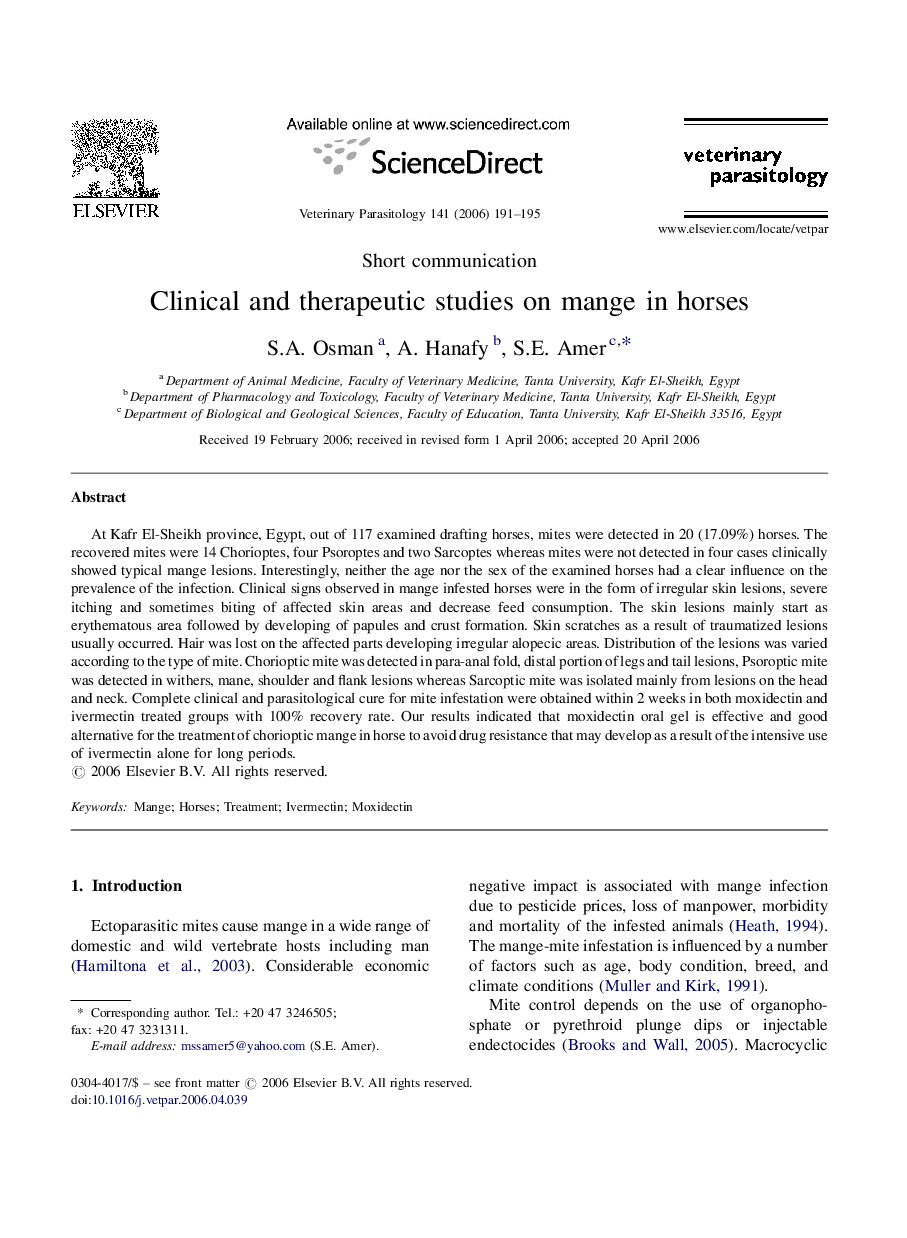| Article ID | Journal | Published Year | Pages | File Type |
|---|---|---|---|---|
| 2472389 | Veterinary Parasitology | 2006 | 5 Pages |
At Kafr El-Sheikh province, Egypt, out of 117 examined drafting horses, mites were detected in 20 (17.09%) horses. The recovered mites were 14 Chorioptes, four Psoroptes and two Sarcoptes whereas mites were not detected in four cases clinically showed typical mange lesions. Interestingly, neither the age nor the sex of the examined horses had a clear influence on the prevalence of the infection. Clinical signs observed in mange infested horses were in the form of irregular skin lesions, severe itching and sometimes biting of affected skin areas and decrease feed consumption. The skin lesions mainly start as erythematous area followed by developing of papules and crust formation. Skin scratches as a result of traumatized lesions usually occurred. Hair was lost on the affected parts developing irregular alopecic areas. Distribution of the lesions was varied according to the type of mite. Chorioptic mite was detected in para-anal fold, distal portion of legs and tail lesions, Psoroptic mite was detected in withers, mane, shoulder and flank lesions whereas Sarcoptic mite was isolated mainly from lesions on the head and neck. Complete clinical and parasitological cure for mite infestation were obtained within 2 weeks in both moxidectin and ivermectin treated groups with 100% recovery rate. Our results indicated that moxidectin oral gel is effective and good alternative for the treatment of chorioptic mange in horse to avoid drug resistance that may develop as a result of the intensive use of ivermectin alone for long periods.
